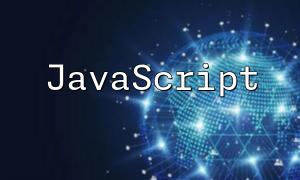In modern website development, creating a stable and efficient environment is crucial. IIS 7 is a powerful web server, and when combined with PHP and MySQL, it provides a strong foundation for dynamic content generation on your website. This guide provides a detailed walkthrough to help you successfully integrate PHP and MySQL in an IIS 7 environment.
Before starting the configuration, make sure that IIS 7 is installed on your server. You can confirm this by checking the "Turn Windows features on or off" option in Windows.
To run PHP on IIS 7, you need to download and install PHP. You can get the latest Windows version from the official PHP website. Here are the steps for installation:
1. Download the PHP ZIP package.
2. Extract the PHP package to the C:\PHP directory.Make sure that the extension_dir is set to point to your extensions directory (e.g., C:\PHP\ext). You can also enable common extensions by adding the following lines:
extension=php_mbstring.dll
extension=php_mysqli.dll
extension=php_openssl.dllNext, you need to register PHP in IIS 7. Open the IIS Manager and follow these steps:
Select your website or server node, double-click on "Handler Mappings". On the right side, choose "Add Module Mapping". In the "Add Module Mapping" window, enter the following details:
Request Path: *.php
Module: FastCgiModule
Executable: C:\PHP\php-cgi.exe
Name: PHP via FastCGIClick "OK" after that. Then, restart IIS for the changes to take effect.
After configuring PHP, you need to install MySQL. Here are the steps to install MySQL:
1. Download the MySQL installer from the official MySQL website.
2. Run the installer and follow the instructions to complete the installation.
3. Configure MySQL and set the root password.To enable PHP to connect to MySQL, ensure that the MySQLi extension is enabled in your php.ini file. Locate and ensure the following line is not commented out:
extension=php_mysqli.dllNext, you can use the following example code to connect to your MySQL database:
$mysqli = new mysqli("localhost", "username", "password", "database");
if ($mysqli->connect_error) {
die("Connection failed: " . $mysqli->connect_error);
}
echo "Connection successful";Once the configuration is complete, you can verify if everything is set up correctly by creating a PHP test file. Create a file named test.php in your web root directory and add the following content:
phpinfo();By visiting http://localhost/test.php in your browser, you should see the PHP configuration page, indicating that PHP is properly installed and working.
With these steps, you've successfully configured PHP and MySQL in an IIS 7 environment. Be sure to regularly check your configuration and keep your software up-to-date for better performance and security.









